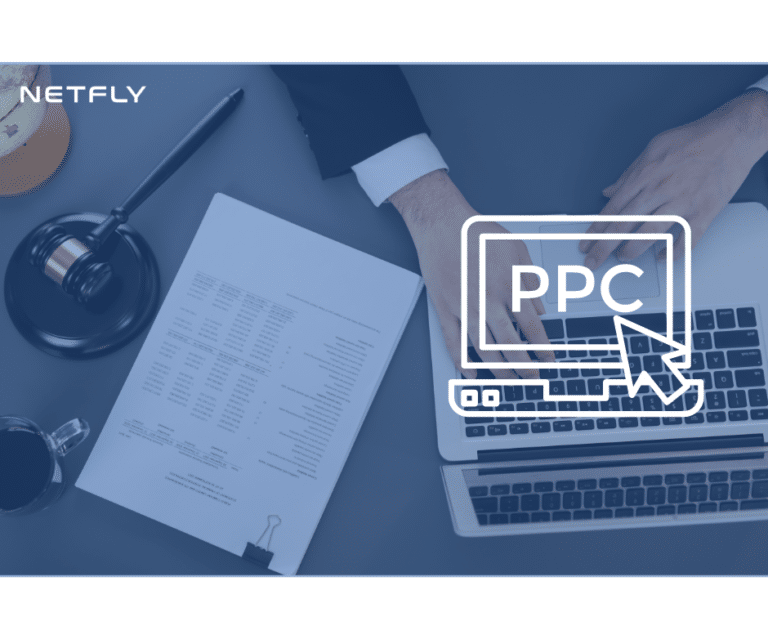Have you ever pondered whether a results-driven SEO strategy can truly transform a personal injury law firm’s online presence? The core idea hinges on understanding competitive analysis, high-intent keyword optimization, and user-centric content creation. But how do these elements intertwine with local SEO techniques and authoritative link building to create a successful digital footprint? By exploring these facets, you’ll uncover how regular monitoring and data-driven adjustments can greatly impact your firm’s visibility and client acquisition. What are the critical steps to guarantee your SEO efforts are both effective and sustainable in the competitive legal landscape?
Key Takeaways
- Conduct competitor analysis to identify successful SEO strategies in the personal injury law niche.
- Target high-intent and long tail keywords for higher conversion rates and qualified traffic.
- Optimize Google My Business profile and encourage positive reviews for local search visibility.
- Create user-centric, authoritative content that addresses common personal injury concerns and builds trust.
- Utilize tools like Ahrefs and SEMrush to track keyword performance and make data-driven adjustments.
Understanding SEO for Law Firms
When you’re diving into SEO for law firms, it’s vital to understand how search engines rank your website and what factors influence those rankings. One of the first steps in optimizing your site is conducting a thorough competitor analysis. By examining your competitors’ strategies, you can identify what’s working in your niche and tailor your approach accordingly. This includes analyzing their backlink profiles, content quality, and user engagement metrics.
Don’t underestimate the power of client testimonials. Search engines value authentic, positive reviews as they signal trustworthiness and client satisfaction. Incorporating client testimonials on your website can enhance your credibility and boost your rankings. Make sure these testimonials are prominently displayed and keyword-optimized to maximize their impact.
Data-driven insights are crucial for making informed decisions. Use tools like Google Analytics to track user behavior, page views, and conversion rates. This data helps you understand what’s resonating with your audience and where improvements are needed. By focusing on these key areas, you can create a user-centric website that not only attracts visitors but also converts them into clients. Remember, a well-optimized site is a powerful tool in your law firm’s marketing arsenal.
Keyword Research Strategies
To effectively navigate keyword research strategies, you’ll need to focus on identifying high-intent keywords that resonate with your target audience and drive qualified traffic to your law firm’s website. Start by honing in on long tail keywords, as these are often less competitive and more specific, leading to higher conversion rates.
- Identify Long Tail Keywords: Use keyword tools like Ahrefs or SEMrush to find long tail keywords relevant to personal injury law. These keywords typically have lower search volumes but higher importance, making them essential for attracting potential clients who are ready to take action.
- Conduct Competitive Analysis: Analyze your competitors’ websites to understand which keywords they’re ranking for. Tools like Moz and SpyFu can help you uncover these insights, allowing you to target similar or complementary keywords to outmaneuver them in search results.
- Evaluate Keyword Performance: Regularly monitor the performance of your chosen keywords using Google Analytics and Search Console. This data-driven approach will help you refine your strategy by focusing on keywords that generate the most qualified leads.
On-Page Optimization
On-page optimization is essential for ensuring your personal injury law firm’s website ranks highly on search engine results pages, driving more qualified traffic and potential clients to your services. To start, focus on meta tags. These HTML elements, including title tags and meta descriptions, play an important role in how search engines understand your site’s content. Make sure your title tags are concise, keyword-rich, and accurately describe each page’s content. Similarly, craft compelling meta descriptions that incorporate relevant keywords and provide a clear summary of what visitors can expect.
Next, don’t overlook image optimization. Properly optimized images can greatly enhance your site’s performance. Use descriptive, keyword-focused file names and include alt text that accurately describes the image while integrating relevant keywords. This not only helps with SEO but also improves accessibility for users with visual impairments.
Additionally, pay attention to your site’s overall structure and internal linking. A well-organized site with clear navigation helps search engines index your pages more efficiently and provides a better user experience. By focusing on these on-page optimization techniques, you’ll improve your personal injury law firm’s visibility and attract more potential clients searching for your services.
Content Creation and Marketing
Content creation and marketing are pivotal for bolstering your personal injury law firm’s SEO strategy, guaranteeing that your website not only ranks well but also engages and converts visitors into clients. High-quality, relevant content establishes your authority and builds trust with potential clients. Here’s how you can amplify your efforts:
- Blog Outreach: Collaborate with authoritative websites and industry blogs to publish guest posts. This not only brings valuable backlinks but also drives targeted traffic to your site. Make sure your content addresses common personal injury concerns and uses keywords strategically.
- Content Repurposing: Maximize the value of your existing content by repurposing it into different formats. Turn blog posts into infographics, videos, or social media snippets to reach a broader audience. This technique keeps your content fresh and extends its lifespan.
- Data-Driven Insights: Use analytics to identify top-performing content and topics that resonate with your audience. Create more of what works and continually refine your strategy based on performance metrics. Focus on user-centric content that answers questions and solves problems.
Local SEO Techniques
When focusing on Local SEO techniques, you’ll want to start by optimizing your Google My Business profile to increase visibility in local searches. Targeting local keywords is important, as it helps your personal injury law firm appear prominently in search results for nearby users. These strategies are essential for driving local traffic and converting potential clients in your area.
Optimizing Google My Business
To maximize your local search visibility, optimizing your Google My Business profile is essential for any personal injury law firm. This powerful tool helps you attract potential clients right when they’re searching for legal services in your area. Here’s how you can make the most of it:
- Complete Your Profile: Make sure all your business information is accurate and up-to-date, including your address, phone number, and hours of operation. Select the most relevant business categories to improve search relevance.
- Encourage Google Reviews: Positive Google Reviews can greatly enhance your credibility and attract more clients. Actively ask satisfied clients to leave reviews and respond promptly to any feedback, showing that you value client experiences.
- Leverage Photos and Posts: Regularly update your profile with high-quality photos of your office, team, and any relevant events. Utilize the posting feature to share updates, announcements, and legal advice, keeping your audience engaged and informed.
Targeting Local Keywords
Building on the foundation of a well-optimized Google My Business profile, targeting local keywords is the next critical step to ensure your personal injury law firm ranks prominently in local search results. Start by conducting a thorough competitor analysis to identify which local keywords are driving traffic to other law firms in your area. Tools like SEMrush or Ahrefs can help you uncover these valuable insights.
Next, integrate these local keywords naturally throughout your website—especially in key areas like titles, meta descriptions, headers, and content. This enhances user experience by ensuring your content is relevant to what potential clients are searching for. Don’t forget to include keywords in your blog posts, FAQs, and service pages to capture a wider audience.
Additionally, utilize location-specific keywords in your content, such as ‘personal injury lawyer in [Your City]’ or ‘best accident attorney [Your City].’ This geo-targeting helps search engines understand your service area and boosts your local SEO.
Lastly, focus on gathering high-quality backlinks from local websites and legal directories. These backlinks enhance your website’s authority and improve your rankings. By implementing these targeted local SEO techniques, you’ll significantly increase your visibility and attract more local clients.
Link Building for Authority
Utilizing high-quality backlinks is essential for establishing your personal injury law firm’s online authority and boosting its search engine rankings. A robust link-building strategy can greatly impact your SEO efforts. Here’s how you can effectively build authority through link building:
- Guest Blogging: Write valuable, informative articles for reputable legal websites. This not only positions you as an expert in your field but also earns you quality backlinks. Focus on creating content that addresses common personal injury concerns to attract relevant traffic.
- Backlink Outreach: Reach out to authoritative websites within the legal niche to request backlinks. Personalize your outreach emails, offering insights or data that can enhance their content. Building relationships with these sites can lead to ongoing backlink opportunities.
- Content Marketing: Develop high-quality, shareable content on your site that naturally attracts backlinks. This could include case studies, infographics, or detailed guides on personal injury law. When other sites reference your valuable content, your backlink profile strengthens, improving your SEO.
Technical SEO Essentials
Guaranteeing your personal injury law firm’s website is optimized for search engines, technical SEO essentials like site speed, mobile-friendliness, and secure connections are crucial for improving your online visibility and user experience. First, prioritize website speed. A fast-loading site not only enhances user satisfaction but also ranks higher on Google. Studies show that 53% of users abandon a site if it takes longer than three seconds to load. Compress images, leverage browser caching, and minimize JavaScript to boost your site’s performance.
Next, focus on mobile optimization. With over 50% of web traffic coming from mobile devices, ensuring your site is mobile-friendly is non-negotiable. Google uses mobile-first indexing, meaning your mobile site impacts your overall rankings. Use responsive design techniques, and ensure that your site’s layout, images, and text are easily navigable on smaller screens.
Lastly, secure connections are a must. Websites with HTTPS encryption are favored by search engines and build trust with visitors. An SSL certificate not only secures data but also positively impacts your rankings. By addressing these technical SEO essentials, you’ll create a more robust online presence that attracts and retains potential clients.
Measuring SEO Success
To measure SEO success for your personal injury law firm, start by analyzing keyword rankings and tracking organic traffic growth. You’ll want to use tools like Google Analytics to see how your target keywords are performing and whether your site is attracting more visitors. These metrics will help you understand your SEO strategy’s effectiveness and identify areas for improvement.
Keyword Ranking Analysis
By regularly tracking and analyzing keyword rankings, you can gain valuable insights into the effectiveness of your personal injury law firm’s SEO strategy. To stay ahead, it’s essential to understand how well your content aligns with user search intent and how it stacks up against your competitors. Here’s how to measure your SEO success effectively:
- Competitor Analysis: Examine the keywords your competitors are ranking for. This will help you identify gaps in your own strategy and discover new keyword opportunities. Tools like Ahrefs and SEMrush can provide detailed competitor insights.
- Search Intent: Make sure that your content matches the search intent of your target audience. Are potential clients looking for information, services, or legal advice? Align your keywords and content accordingly to improve rankings and user satisfaction.
- Keyword Performance Tracking: Regularly monitor the performance of your chosen keywords. Tools like Google Search Console and Moz can help you track rankings, click-through rates, and other essential metrics. This data-driven approach enables you to make informed adjustments to your SEO strategy.
Organic Traffic Growth
When you measure organic traffic growth, you’re able to gauge the direct impact of your SEO efforts on attracting potential clients to your personal injury law firm’s website. Start by analyzing traffic trends using tools like Google Analytics. Track metrics such as sessions, users, and page views over time. Increasing these metrics indicates that your SEO strategies are working effectively.
Competitive analysis is crucial. Compare your organic traffic growth with that of your competitors. Tools like SEMrush or Ahrefs can provide insights into how your traffic stacks up against theirs. This data helps you understand where you stand in the market and identify opportunities for improvement.
User experience plays a critical role in organic traffic growth. Make sure your website is user-friendly, mobile-responsive, and fast-loading. High bounce rates can negatively impact your SEO, so focus on improving site navigation and content relevance. Regularly update your blog with valuable, keyword-rich content that addresses common personal injury concerns.
Frequently Asked Questions
How Long Does It Take to See SEO Results for a Personal Injury Law Firm?
You’re wondering how long SEO results take. Typically, with solid keyword research and local citations, you might see initial improvements in 3-6 months. However, it can take up to a year for significant progress.
What Budget Should a Personal Injury Law Firm Allocate for SEO Services?
You’ll want a budget breakdown of $3,000-$10,000 monthly for SEO services. Expect ROI within 6-12 months. Allocate funds based on your firm’s size, competition, and desired results to guarantee effective, user-centric, data-driven outcomes.
Can SEO Help a Personal Injury Law Firm Compete With Larger Firms?
Absolutely, “David can beat Goliath.” With local optimization and content marketing, you can target specific demographics effectively. This data-driven approach helps you compete with larger firms by ensuring your services are user-centric and highly visible.
How Does SEO Impact a Personal Injury Law Firm’s Client Acquisition Cost?
SEO can reduce your client acquisition costs by leveraging keyword research and content optimization. By ranking higher in search results, you’ll attract more organic traffic, ultimately lowering the expense of paid advertising and client outreach.
Are There Any SEO Techniques Specific to Personal Injury Law Firms Only?
In the competitive legal landscape, you should focus on local citations and legal directories. They’re your golden ticket to visibility, helping to elevate your law firm’s profile and draw in clients searching for your specific services.
Conclusion
So, you thought SEO for a personal injury law firm was just about sprinkling a few keywords and calling it a day? Think again. With competitive analysis, high-intent keywords, on-page optimization, content creation, local SEO, link building, and technical essentials, you’ve got your work cut out for you. But hey, who said attracting qualified traffic and driving more clients was going to be easy? Keep tweaking based on data-driven insights, and you’ll see the results roll in.










